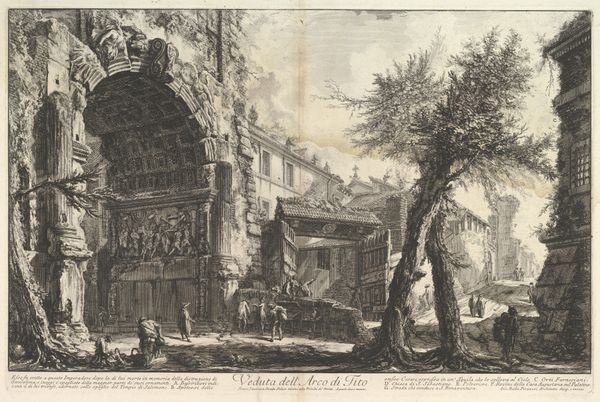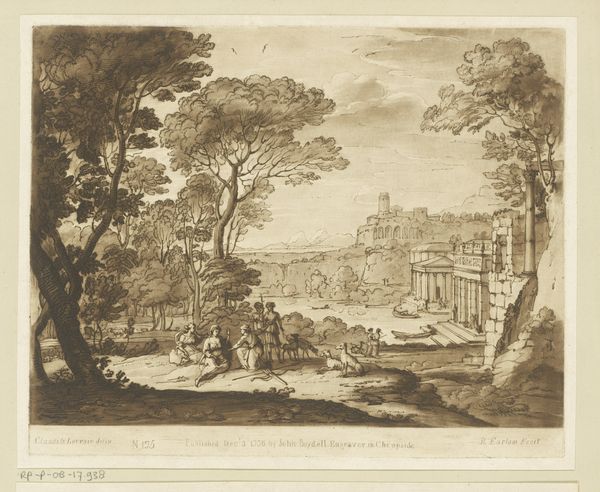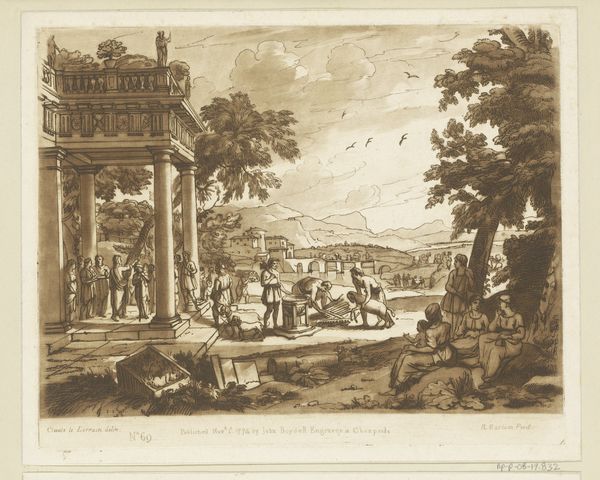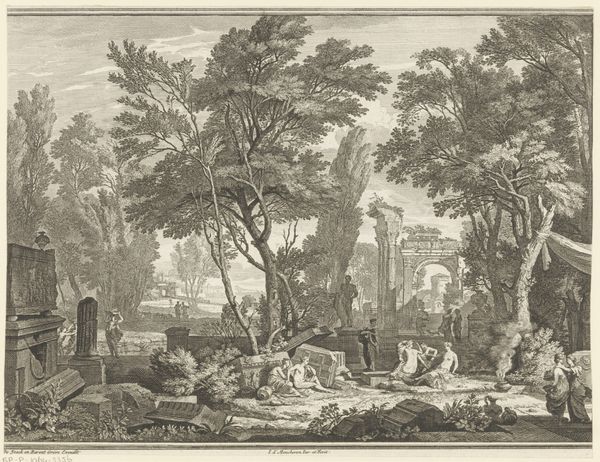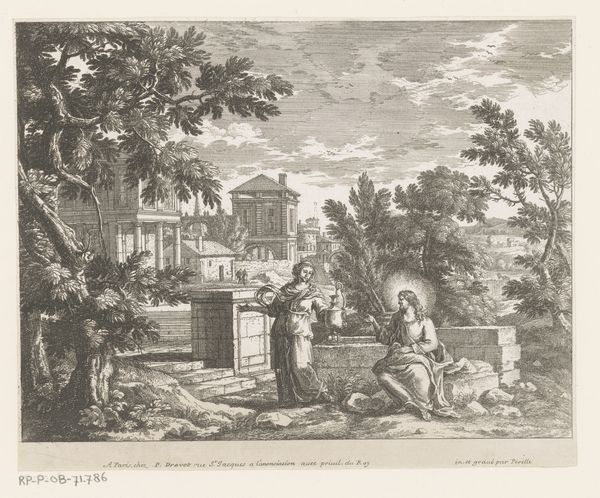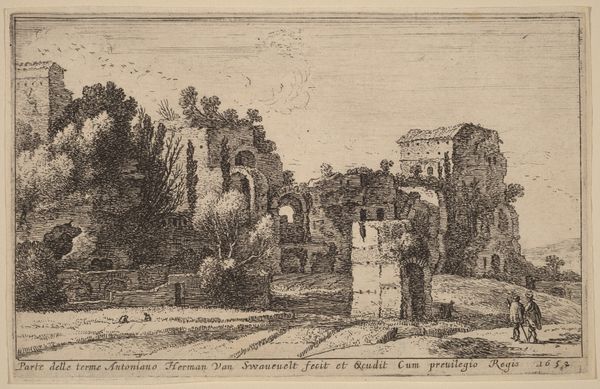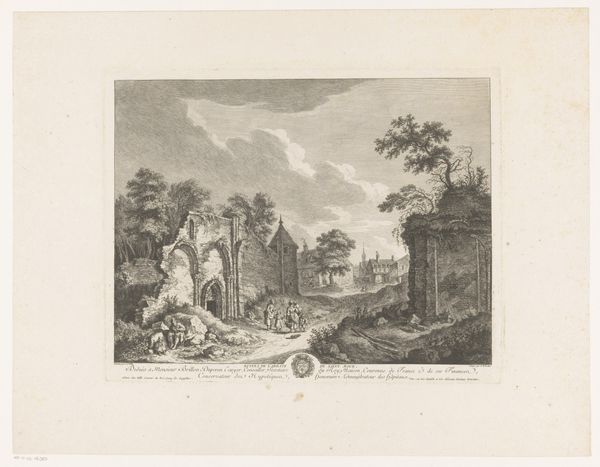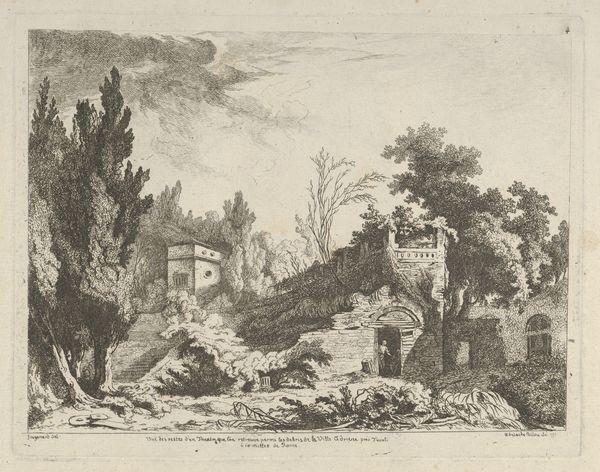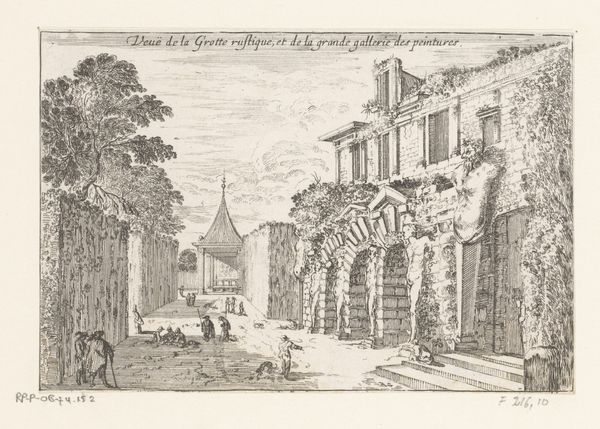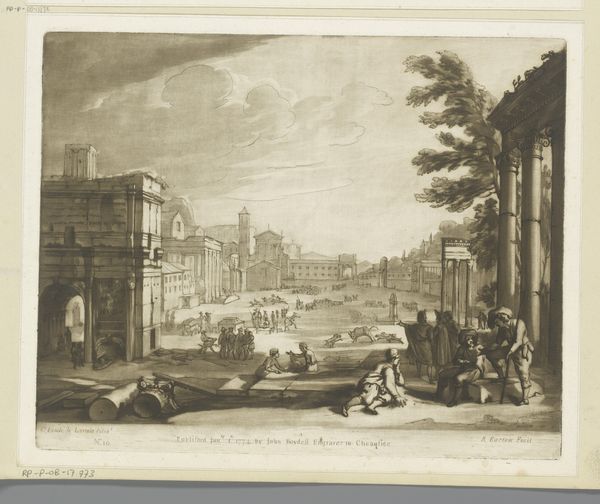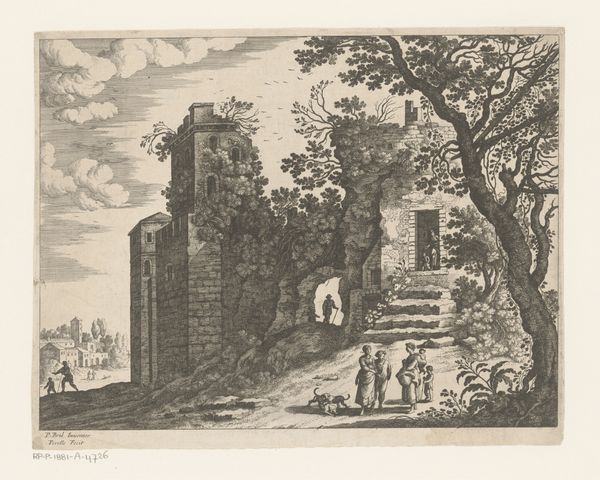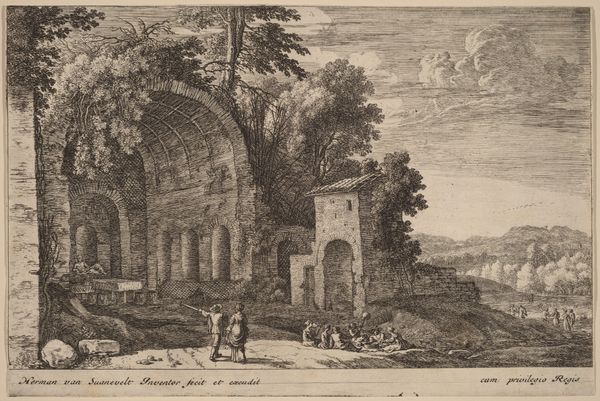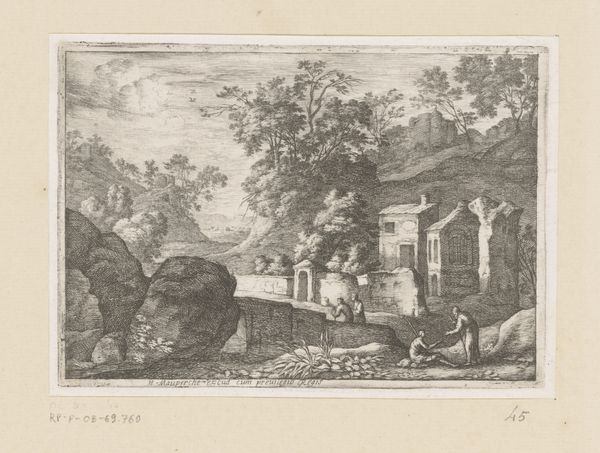
print, engraving
# print
#
landscape
#
classical-realism
#
figuration
#
romanesque
#
history-painting
#
engraving
Copyright: National Gallery of Art: CC0 1.0
Curator: This is "Landscape with Ruins", an engraving by Marco Ricci. Note how it merges pastoral life with the remnants of classical architecture. Editor: The first thing that strikes me is the tonal range despite its being an engraving; it uses such subtle gradations of light and shadow to suggest atmosphere. There’s a pervasive mood of tranquil melancholy. Curator: Precisely. This was produced in a time when prints were a main method of circulating landscapes and art to the public. This piece serves as a document of that period’s interest in antiquity as it slowly eroded. The ruins are rendered not as objects of reverence, but merely as background, subtly implying themes of time’s relentless march and the impermanence of grand empires. Editor: Looking closer at the formal elements, observe how Ricci employs dense clusters of hatching to define the shadowed areas, contrasting this with the more open, delicate lines of the figures, thereby highlighting their interaction with the scene’s composition. The layout itself—with structures placed deep inside its spatial volume—creates considerable visual depth. Curator: This type of art was accessible to middle classes as decoration and a marker of culture. Its relatively easy mode of manufacture provided wider reach. Moreover, the figures aren’t particularly noble. This speaks to a desire for art that depicts something akin to everyday life amid places of myth and majesty, rather than scenes of heroism. Editor: See how Ricci positions the viewer? Our eye travels across this landscape because it’s made appealing via simple geometries and patterns, all while using visual pathways into its detailed perspective to find figures and various narrative suggestions that capture both classical nostalgia and also suggest mortality. Curator: Ricci presents an ideal scene, a stage where humans move alongside historical context. Ultimately, its popularity tells us about what resonated with buyers. Editor: A bittersweet synthesis. One marvels at the art’s form even while contemplating history and transience.
Comments
No comments
Be the first to comment and join the conversation on the ultimate creative platform.
